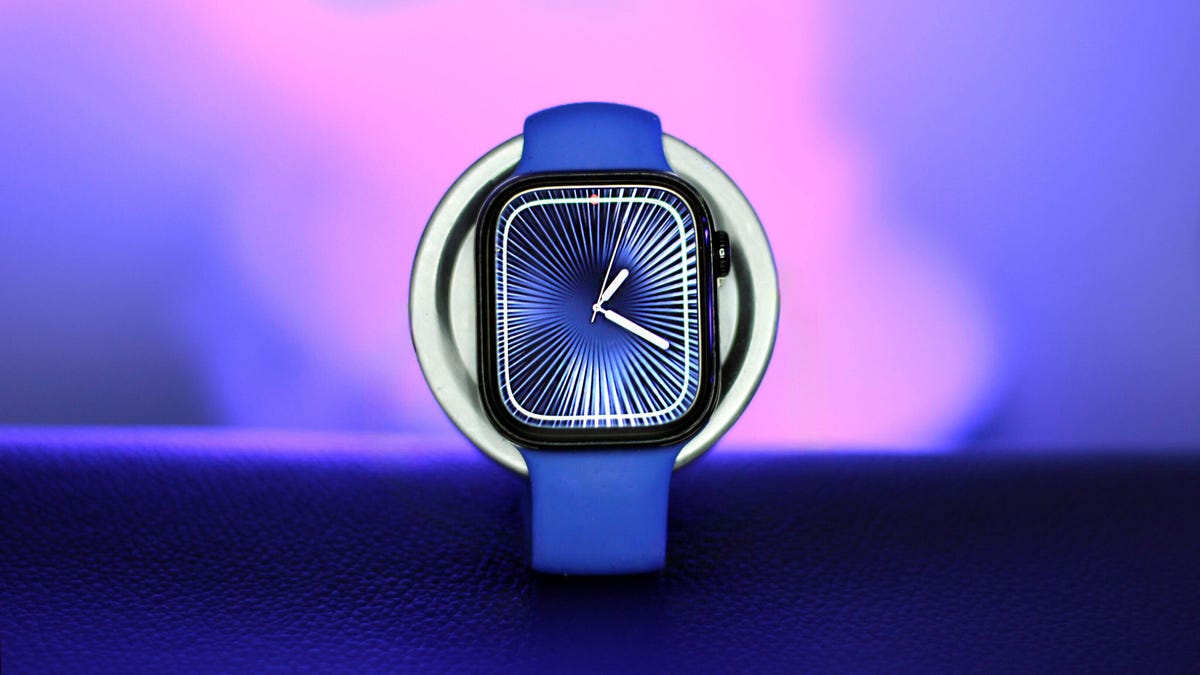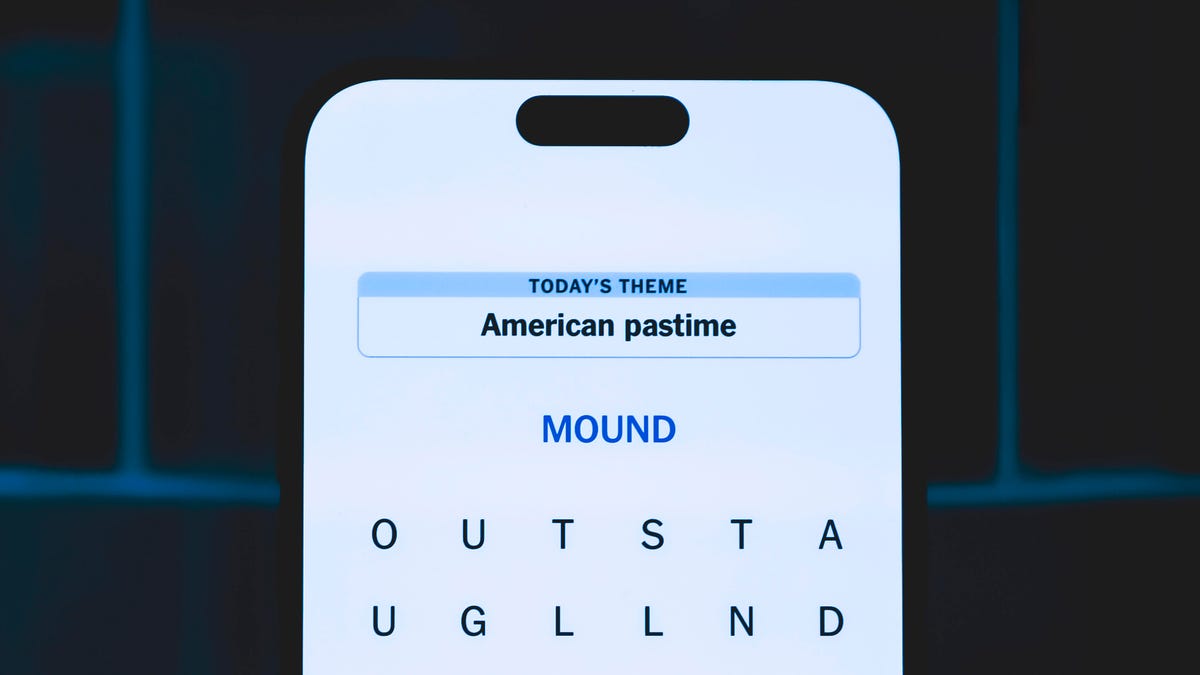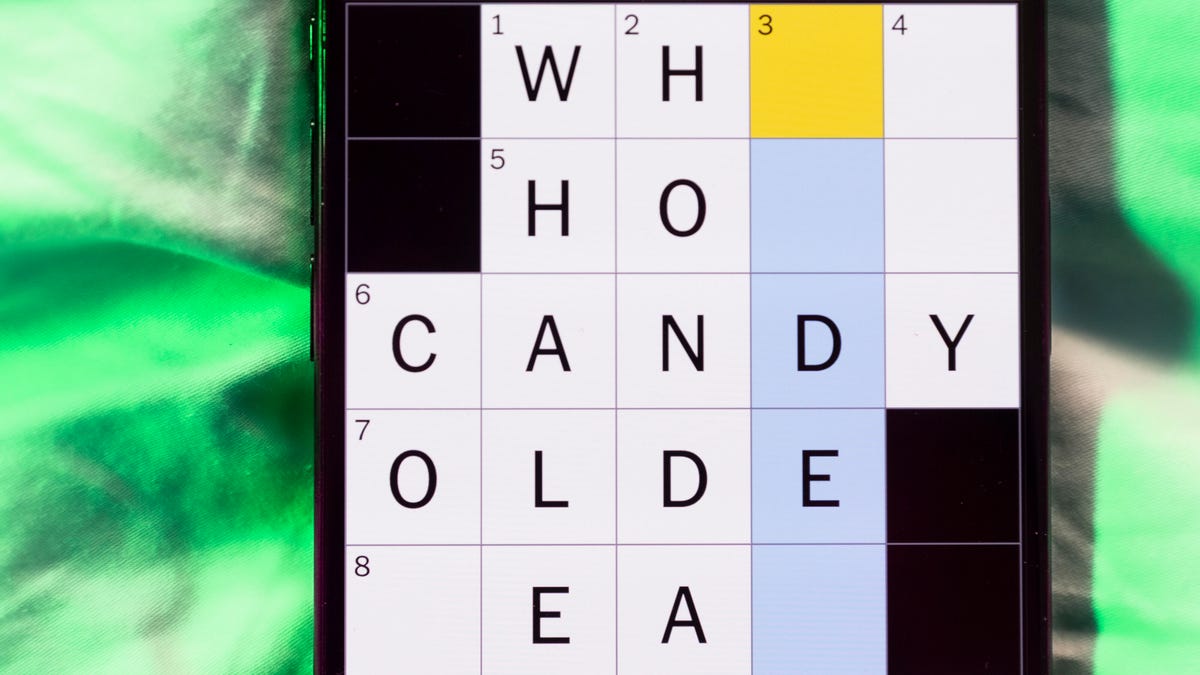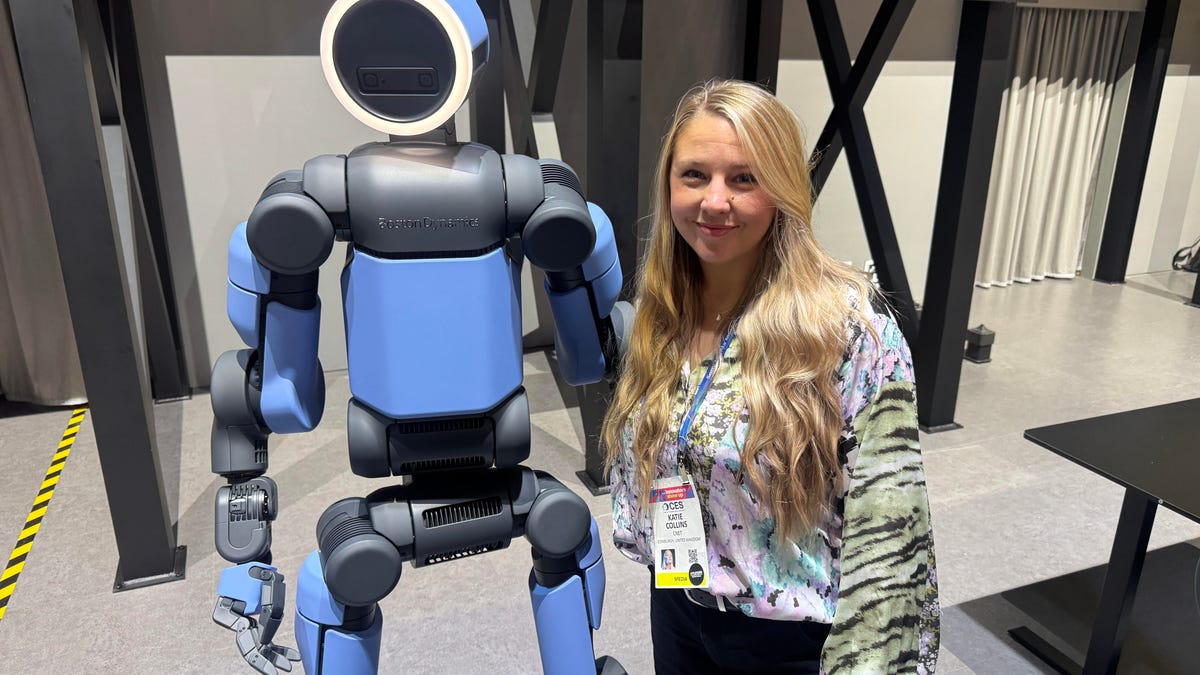Technologies
10 Features That Would Make Me Buy the Apple Watch Series 11
The next Apple Watch is coming soon! These are ways for Apple to make it shine and keep up with the competition.

With WatchOS 26 now in public beta, we’re getting a telling preview of what’s coming to Apple Watches this fall. But for those of us eyeing the next model (likely the Apple Watch Series 11, and possibly an Ultra or SE), the real question is: How will Apple one-up itself from last year’s Series 10? Better yet, how will it compete with newer flagships vying for your wrist this year?
Some of these requests are grounded in rumors, while others are mere wishful thinking. Here’s everything I hope Apple brings to its next smartwatch.
This wishlist is focused on the Series 11, because it’s the flagship model and the one that usually sets the tone for where the platform is headed next.
1. Smarter Siri
After using Gemini AI on the Galaxy Watch 8, it’s painfully clear just how far Siri is lagging. Gemini isn’t just more conversational; it’s actually useful on the wrist. It handles complex prompts in one go, summarizes aloud and spares you from dead-end results or clunky app handoffs. On a smartwatch, where time and screen space are limited, that makes a huge difference.
If Apple wants to compete, it needs to bring more «intelligence» to the Apple Watch. Right now, the few AI features that are available on the watch in the beta of WatchOS 26 (live translations in text messages and Workout Buddy) require an Apple Intelligence-enabled iPhone to do the heavy lifting. Siri needs a serious upgrade across the board, along with more standalone processing power on the watch.
2. More powerful processor
This brings us to the chip that runs everything. The Ultra 2 and Series 10 already made strides by enabling on-device Siri for tasks like starting or stopping workouts without needing a phone nearby.
For the smarter Siri Apple envisions, the Series 11 will need more on-watch processing. The rumored S11 chip will have to bring real gains in speed and efficiency to support features like Workout Buddy directly on the watch, without leaning on the iPhone.
3. Two-day battery life
For me, battery life is one of the biggest deterrents to using the Apple Watch to its full potential. I get about 26 hours on the smaller Series 10 — barely enough to make it through a full day and night — which means constantly choosing between sleep tracking and starting my day with a full charge.
Most days, because I’m rushing out the door, I pick a full day over sleep tracking. That creates gaps in my Vitals app, throwing off the outlier alerts that could help flag onset illness, or the retroactive ovulation predictions that require overnight temperature tracking. And when I do manage a quick top-up, I often run out of juice midday (usually before my workout) so I don’t get the satisfaction of closing my rings.
The Ultra line has already shown what’s possible, pushing up to two days of battery life at full throttle (or 72 hours in low power mode). And while this may be far-fetched, I wish the regular Series would catch up. Apple hasn’t mentioned any efficiency gains in WatchOS 26, and so far, battery life rumors for the Series 11 are scarce. But if Apple can get us to a reliable 48 hours (even in low power mode), it would eliminate a major pain point for anyone serious about sleep tracking.
4. A surprise health/fitness metric
Blood pressure monitoring might be the most requested health feature I see (based on my very unscientific comment section data). Apple is reportedly testing it, but it may still be a year or more away. Noninvasive glucose tracking is another wishlist item but that’s even further out.
Still, there’s room for a novel feature that hasn’t leaked yet. Samsung’s Antioxidant Index was a pleasant surprise: a first-of-its-kind skin analysis that detects carotenoids. The feature hasn’t received FDA approval so it’s mostly categorized as a «wellness» tool and it’s questionable whether it will prove helpful long-term. But it sets the watch apart — and honestly, it was just fun to be surprised for once. It’s also been a neat little add-on that’s helped me stay more mindful of what I eat and how I manage stress by giving me something measurable to work on.
5. Clearer signals when you’re getting sick
The Apple Watch Vitals app already alerts you when multiple metrics are off but it doesn’t connect the dots for you. I’d love to see a feature like the Oura Ring’s Symptom Radar, which interprets those shifts and gently nudges you to take it easy, letting you pause your activity goals until your numbers are back to normal.
Apple does let you pause activity rings manually but when you’re dazed and sniffling, you’re probably not thinking about toggling settings. It should do that heavy lifting for you.
6. Circular design or rotating
This is veering deep into the realm of deranged wishful thinking but if Apple ever released a circular version of the Apple Watch — or better yet, added a rotating bezel like Samsung’s Classic series — I would be first in line. The rectangular design is iconic, but circular watches will always hold a special aesthetic place in my heart. And the beze l… that tactile cherry on top of a very elegant, albeit far-fetched, sundae.
7. UV exposure alerts
As someone who loves being outdoors, I never even considered I’d have issues getting enough Vitamin D in my day until I wore the Ultrahuman smart ring and realized my marathon office sessions were taking their toll. And I imagine this rings true for a lot of us. The ring would alert me when I hadn’t met my daily UV minimum — a surprisingly helpful nudge that made me rethink how much time I spend indoors.
The Apple Watch does have a UV Index complication option on some of its watchfaces but it’s passive and easy to ignore. I’d love proactive alerts that track your cumulative exposure and warn you when you’ve had too much — or not enough.
8. Dual frequency GPS, standard
The Ultra already includes precision dual-frequency GPS, but the regular Series 10 still doesn’t. Apple should make this standard across the board, just like Samsung did with its Galaxy Watch 8 lineup. It’s a feature you don’t realize you’re missing until you experience it, as it significantly improves location accuracy, especially in dense urban areas.
9. More app functionality
Now we’re crossing into software wishlist territory but I’d love to see full-fledged apps like WhatsApp on the watch with full call and message capabilities. The Notes app is finally arriving in WatchOS 26 (better late than never) and it’s a good reminder that there’s still a lot of untapped potential in bringing more everyday phone tools to the wrist.
10. More gesture customization
Apple introduced the double-tap gesture in 2023 and WatchOS 26 adds a flick gesture for quick controls. But gestures still feel underused (at least by this reviewer), mainly because you can’t customize them much beyond the limited list that Apple provides.
The default actions like silencing alarms or calls are fine but I’d love to assign gestures to things like pinging my phone or launching specific apps. Also, a small on-screen reminder flagging gesture shortcuts could go a long way in retraining that muscle memory.
Bottom line
Apple doesn’t need to reinvent the wheel with the Series 11 (although a rotating bezel would be nice) but with Gemini AI pushing Android forward, it does need to make some moves. Smarter Siri, more contextual health insights and a battery that can actually keep up … that’s the Apple Watch I’m waiting for.
Technologies
Today’s NYT Strands Hints, Answers and Help for Jan. 9 #677
Here are hints and answers for the NYT Strands puzzle for Jan. 9, No. 677.

Looking for the most recent Strands answer? Click here for our daily Strands hints, as well as our daily answers and hints for The New York Times Mini Crossword, Wordle, Connections and Connections: Sports Edition puzzles.
Today’s NYT Strands puzzle is a fun topic — but one of the answers describes something I’ve never heard of before. Also, some of the answers are difficult to unscramble, so if you need hints and answers, read on.
I go into depth about the rules for Strands in this story.
If you’re looking for today’s Wordle, Connections and Mini Crossword answers, you can visit CNET’s NYT puzzle hints page.
Read more: NYT Connections Turns 1: These Are the 5 Toughest Puzzles So Far
Hint for today’s Strands puzzle
Today’s Strands theme is: For cubs fans.
If that doesn’t help you, here’s a clue: Like Gentle Ben.
Clue words to unlock in-game hints
Your goal is to find hidden words that fit the puzzle’s theme. If you’re stuck, find any words you can. Every time you find three words of four letters or more, Strands will reveal one of the theme words. These are the words I used to get those hints but any words of four or more letters that you find will work:
- LAIR, RAIL, CROP, LAID, BALD, DEAN, BROW, DIZZY
Answers for today’s Strands puzzle
These are the answers that tie into the theme. The goal of the puzzle is to find them all, including the spangram, a theme word that reaches from one side of the puzzle to the other. When you have all of them (I originally thought there were always eight but learned that the number can vary), every letter on the board will be used. Here are the nonspangram answers:
- BLACK, BROWN, GRIZZLY, PANDA, POLAR, SPECTACLED (That last one is the one I’ve never heard of! But it’s real!)
Today’s Strands spangram
Today’s Strands spangram is BEARSINMIND. To find it, start with the B that’s five rows to the right and three letters down, then wind up, over and down the whole far-right row.
Don’t miss any of our unbiased tech content and lab-based reviews. Add CNET as a preferred Google source.
Toughest Strands puzzles
Here are some of the Strands topics I’ve found to be the toughest.
#1: Dated slang. Maybe you didn’t even use this lingo when it was cool. Toughest word: PHAT.
#2: Thar she blows! I guess marine biologists might ace this one. Toughest word: BALEEN or RIGHT.
#3: Off the hook. Again, it helps to know a lot about sea creatures. Sorry, Charlie. Toughest word: BIGEYE or SKIPJACK.
Technologies
Today’s NYT Mini Crossword Answers for Friday, Jan. 9
Here are the answers for The New York Times Mini Crossword for Jan. 9.

Looking for the most recent Mini Crossword answer? Click here for today’s Mini Crossword hints, as well as our daily answers and hints for The New York Times Wordle, Strands, Connections and Connections: Sports Edition puzzles.
Need some help with today’s Mini Crossword? The Across clues were kind of tough today. Read on for all the answers. And if you could use some hints and guidance for daily solving, check out our Mini Crossword tips.
If you’re looking for today’s Wordle, Connections, Connections: Sports Edition and Strands answers, you can visit CNET’s NYT puzzle hints page.
Read more: Tips and Tricks for Solving The New York Times Mini Crossword
Let’s get to those Mini Crossword clues and answers.
Mini across clues and answers
1A clue: Question in a late-night text
Answer: YOUUP
6A clue: Plentiful
Answer: AMPLE
7A clue: Saint ___ and Nevis (Caribbean nation)
Answer: KITTS
8A clue: Baby-bringing bird
Answer: STORK
9A clue: Take care of the tab
Answer: PAY
Mini down clues and answers
1D clue: Himalayan herbivores
Answer: YAKS
2D clue: Fail to include
Answer: OMIT
3D clue: «High five!»
Answer: UPTOP
4D clue: The «U» of UV rays
Answer: ULTRA
5D clue: Annoying to deal with
Answer: PESKY
Don’t miss any of our unbiased tech content and lab-based reviews. Add CNET as a preferred Google source.
Technologies
I Got Up Close and Personal With Boston Dynamics’ New Atlas Robot
Before Atlas takes its first steps into the world of work later this year, I found myself face-to-face with CES 2026’s most talked-about robot on the show floor.

When I say that I went hands-on with the new Boston Dynamics Atlas robot, I mean that I actually held hands with it. This humanoid robot, which CNET just awarded the Best Robot of CES Award, is one of the most advanced in the world, and I couldn’t pass up the opportunity to get up close and personal with it.
This product version of the robot, which is set to be shipped to Hyundai factories imminently to start working, has been the talk of CES this year. The specific Atlas robot I encountered was a static model that wasn’t turned on or fully operational. Our interactions were, therefore, sadly one-sided. Still, I ran my hands over its soft-touch plastic shell and gently prodded at its finger joints, wondering how it would feel if they gripped me back.
People tend to have varying feelings about humanoid robots — understandable given that they are built to some degree in our image, while also usually being stronger than us, with «brains» that we don’t fully understand. Atlas definitely evokes contradictory emotions for me — even more so when I stood face-to-face with it.
I’m in awe of the engineering, a little fearful of its capabilities, hesitant about what it could mean for the future of humanity and charmed by its design and styling. The periwinkle blue iteration of Atlas that I met on the show floor at CES 2026 almost bears more resemblance to a Dyson product than it does the industrial robots that defined Boston Dynamics’ early days, when it was best known for its work with DARPA.
«There’s a lot of really specific things about this robot that probably look a little weird,» said Zachary Jackowski, Boston Dynamics VP and general manager of Atlas. He pointed to the legs, which he described as «like nothing anyone else was doing.»
Atlas’ thighs are narrow set and in line with the torso, while the calves are wider set, attached to their upper counterparts with a circular joint. This robot is, in fact, all subtle curves and soft lines. There are no harsh edges or stark angles.
During a year when CES has been flooded with humanoid robots, Atlas definitely does stand out due to its design. It appears both less classically human and less industrial than some of its peers, while also lacking the often intimidating, featureless faces they tend to exhibit. Instead, it has two low-set cameras resembling eyes placed where you’d usually expect a mouth to be. Its face is a perfect flat circle, defined by an LED halo that gives it a somewhat Pixar lamp effect.
I asked Jackowski why Boston Dynamics decided to skew so relatively unhuman with this version of its humanoid. «Well, it’s not a human,» he said. «It projects the wrong first impression about a robot to have it pretend to be something that it’s not.»
Particularly in the early days of humanoids, he added, robots won’t have anything like human-like intelligence. People should look at it and see it for what it is — a tool for performing tasks safely and efficiently.
In fact, most of the design decisions were made to keep Atlas as simple, scalable and safe as possible, Jackowski said. I remark that there’s some irony in thinking of a humanoid robot as simple, given the complexity of the technology and development process to bring Atlas to life.
The key to making it simple, Jackowski said, is having a strong enough grasp of the technology to «accomplish the complex thing of building a humanoid robot,» but then being able to take it apart and understand that you can use fewer computers and actuators in it while achieving the same results.
And it’s essential to Boston Dynamics that Atlas is perceived as simple. After all, it’s a general-purpose humanoid, which might eventually be sent far and wide to fulfil all manner of roles. Jackowski calls it the «ultimate generalist.»
Simplicity aside, there are aspects of Atlas that Jackowski believes set it apart from other humanoids at the show. «The repairability of this robot is crazy good,» he said. «The runtime is crazy good. The strength is unlike anything.»
From working in Hyundai’s manufacturing plants, Atlas’s job trajectory is to eventually graduate to many of the same industrial environments where Boston Dynamics’ Spot robot works, before moving to bussing tables in the service industry and eventually into the home. The robot will evolve between now and then, Jackowski said. However, this could be an early glimpse of the type of humanoid that will eventually be our housemate.
That’s some way away, though, which is probably for the best. As I gaze up at Atlas, which I’d guess is around the same height as my husband, my feeling is that, however impressive Atlas is, I’m still not ready for it to move in.
-

 Technologies3 года ago
Technologies3 года agoTech Companies Need to Be Held Accountable for Security, Experts Say
-

 Technologies3 года ago
Technologies3 года agoBest Handheld Game Console in 2023
-

 Technologies3 года ago
Technologies3 года agoTighten Up Your VR Game With the Best Head Straps for Quest 2
-

 Technologies4 года ago
Technologies4 года agoBlack Friday 2021: The best deals on TVs, headphones, kitchenware, and more
-

 Technologies4 года ago
Technologies4 года agoGoogle to require vaccinations as Silicon Valley rethinks return-to-office policies
-

 Technologies4 года ago
Technologies4 года agoVerum, Wickr and Threema: next generation secured messengers
-

 Technologies4 года ago
Technologies4 года agoOlivia Harlan Dekker for Verum Messenger
-

 Technologies4 года ago
Technologies4 года agoiPhone 13 event: How to watch Apple’s big announcement tomorrow
